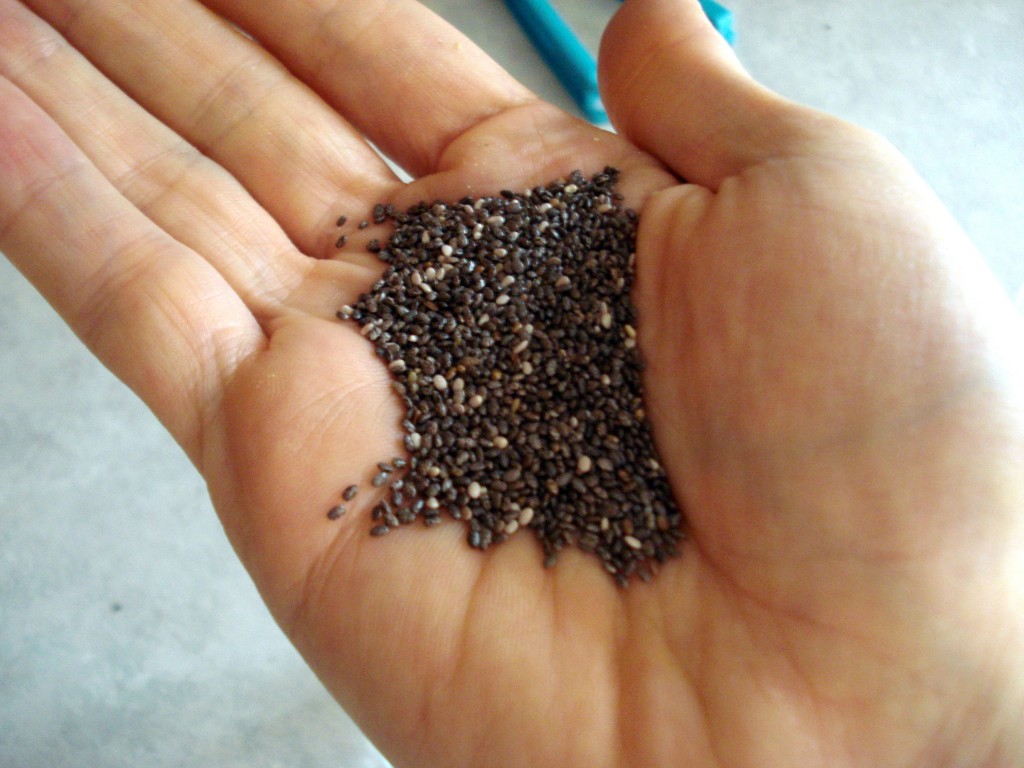(From ABC News)
 An ancient seed is finally having its day in the sun.
An ancient seed is finally having its day in the sun.
Actually, its second day in the sun. The first time around was as the key ingredient in the gag gift known as “the pottery that grows.” Ch-Ch-Ch-Chia!
2013 is undoubtedly the year of the chia seed among the health conscious. For a while it was flax seed. And 2012 could easily have been named “the year of kale.” But this year, experts agree, belongs to chia.
“Chia seeds have been in Whole Foods for a long time, but they’re just now starting to grow in popularity,” said Drew Rosen, nutrition and cooking teacher at New York City’s Whole Foods Market Tribeca. “It’s an ancient crop, but because the seeds are so flexible and high in omega threes, they are just blossoming all over the markets in all different types of products.”
Indeed. There are chia seeds, ground chia seeds, chia bars, chia snacks, chia drinks. The drink aisle alone housed four different brands of chia-seed drinks.
All these products are in response to high demand. People are looking for chia in all its forms, Rosen said. “It runs the gamut, some people look for the seeds, some for the products. People want to make it easy for themselves.”
“Easy” could be precisely what makes chia such a hit in health food circles. While it can be made into pudding, or used as an egg substitute for the vegan crowd, the same benefits can be found simply by sprinkling a teaspoon into your yogurt, oatmeal or smoothie. Some people simply add it to their water.
Unlike flax seed, chia seeds don’t have to be ground and they don’t go rancid the way flax does. “Chia seeds are going to absolutely replace flax seeds,” said Rosen. “They’re the absolute best source of omega three fats on the market, hands down, when you consider the ratio of omega three to omega six.”
But he cautioned, “You should only eat a small amount, maximum one ounce a day.”
That’s because chia is very high in fiber, which in large quantities can cause stomach upset.
Licensed nutritionist Lisa Goldberg, who runs a company called Health Coach, which delivers healthy lunches, agrees that a little chia goes a long way. Including, she said, benefits for those trying to lose a few pounds.
“It’s a high source of fiber,” she said. “Chia will keep you fuller longer and prevent you from overeating. You have that feeling of fullness in your stomach because when you wet chia seeds, they form a gelatinous substance that takes longer to digest.
“You’ll overeat less and tend to snack less. If you eat chia before a meal, you’ll eat less at the next meal. It packs a nutritional punch without adding a lot of food to your diet.”
And while the drinks in particular are convenient and filling, Goldberg does not recommend them as a meal replacement. “There’s not enough nutrients and calories. What I would say is, it’s a great addition.”
Dr. Jeffrey Manning, DC
Manning Wellness Clinic
2702 McKinney Avenue, suite 202
Dallas, TX 75204
214-720-2225




